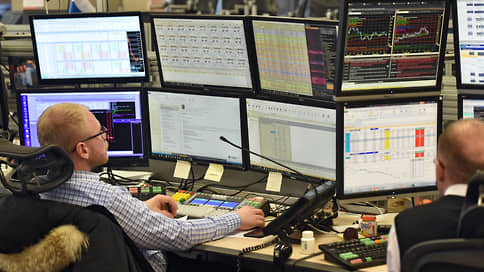Why are replacement bonds interesting?
[ad_1]

The supply on the replacement bond (SR) market is expanding, both due to new issues and new issuers. Since the beginning of the year, four more companies have made debut issues of such securities. Replacement bonds allow you to protect your investments from the weakening of the ruble, and their yield is currently 6–8% per annum in foreign currency. However, when choosing such securities, you should not forget about the credit risks of issuers and liquidity risks.
New names
Since the beginning of 2024, six issuers have placed and additionally placed replacement bonds. Moreover, four issuers made debut substitutions – MKB (€111 million), HKF-Bank ($156 million), TMK ($350 million) and ChelPipe ($262 million). According to Alexey Bulgakov, head of the debt market analytics department at Renaissance Capital, the total volume of the placements was $1.1 billion, but taking into account two redemptions – only $0.5 billion. The total volume of outstanding bonds is about $20 billion, including quasi-replacement bonds ( PIK-26, SUEK-26 and others).
Currently, according to Rusbonds, another 13 issues of replacement bonds of 4 issuers are being prepared for placement, including VTB, SIBUR and Transcapitalbank who will be placing their securities for the first time.
In December last year the supervisory board VTB approved the replacement of three issues of Eurobonds, the largest of which with a par value of $2.25 billion.
In accordance with the December decree of the President of the Russian Federation, Eurobonds must be replaced by the end of the first half of 2024. At the same time, three issuers received permission from the government commission not to make a substitution – Severstal, Uralkali and VEB. According to Alexei Bulgakov, in corporate issues, based on the average “replacement rate” for 2023 of 50–55% and already placed in January–February 2024, foreign currency bonds with a nominal value of $4–6 billion will likely be placed.
Currency alternative
Substitute bonds may be interesting for investment as an alternative to cash or non-cash storage of funds in unfriendly currencies, the exchange rate of which has again begun to rise steadily. According to the Moscow Exchange, at the end of trading on Thursday, the dollar exchange rate exceeded 92.85 rubles/$, which is by 0.63 rubles. higher than the closing value of the previous week and almost 5.5 rubles. above the local minimum set in early January.
In addition to this, such securities pay a coupon, which, combined with prices below par value, will provide a high yield to maturity even without taking into account changes in the ruble exchange rate. In particular, dollar replacement bonds of Gazprom Capital are traded with a yield to maturity of 5.5–6.5% per annum, and the yield of bonds in euros is 6.5–6.8% per annum. Replacement bonds of State Transport Leasing Company provide higher yields (7–8% per annum).
Associated risks
In general, when choosing bonds, it is necessary to take into account the credit profile of the issuer – its debt load, debt repayment schedule, and the dynamics of free cash flow. “It is worth looking at the fairness of the dynamics of the spread of corporate paper, that is, what additional risk premium does the yield of a corporate issue give over the dollar yield of sovereign Eurobonds (the current yield to maturity is 4.5–5% per annum) and how fair is this premium for the financial position of the corporate issuer,” notes Ivan Panov, senior analyst at Pervaya Management Company.
The level of secondary liquidity plays an important role when choosing a closed account. “Liquidity is very important, because the higher it is, the easier it is to buy or sell an asset at an acceptable price,” notes Lyudmila Rokotyanskaya, an expert on the stock market at BCS World of Investments. The most liquid replacement bonds are those of Gazprom and Norilsk Nickel – for some issues, average daily trading volumes reach several hundred million rubles.
In addition, it is necessary to take into account currency risk, which includes not only the possible strengthening of the ruble, but also the likely transition to non-market exchange rate formation.
The latter could happen if Western sanctions are introduced against the Moscow Exchange and NCC (a division of the exchange through which transactions are settled, including with the dollar and the euro). In this case, the exchange rate setting mechanisms will become non-market. “Last year, some government officials voiced the idea multiple courses, creating a special “membrane” between the domestic and external markets,” notes Lyudmila Rokotyanskaya.
Scarce Supply
Despite the significant increase in prices for replacement bonds based on the results of 2023, this instrument remains interesting for investors, according to managers. The growth driver will be both the completion of the process of replacing Eurobonds and the redemption of outstanding issues. As a result, the number of alternative investments in financial instruments denominated in foreign currency will decrease on the market. “By the end of the year, about $8.4 billion of foreign currency bonds will be redeemed in the Russian circuit, which will be an additional factor in creating increased demand for the purchase of bonds denominated in foreign currency,” emphasizes Mr. Panov.
[ad_2]
Source link





